Improved nutrient value of fillet and offal
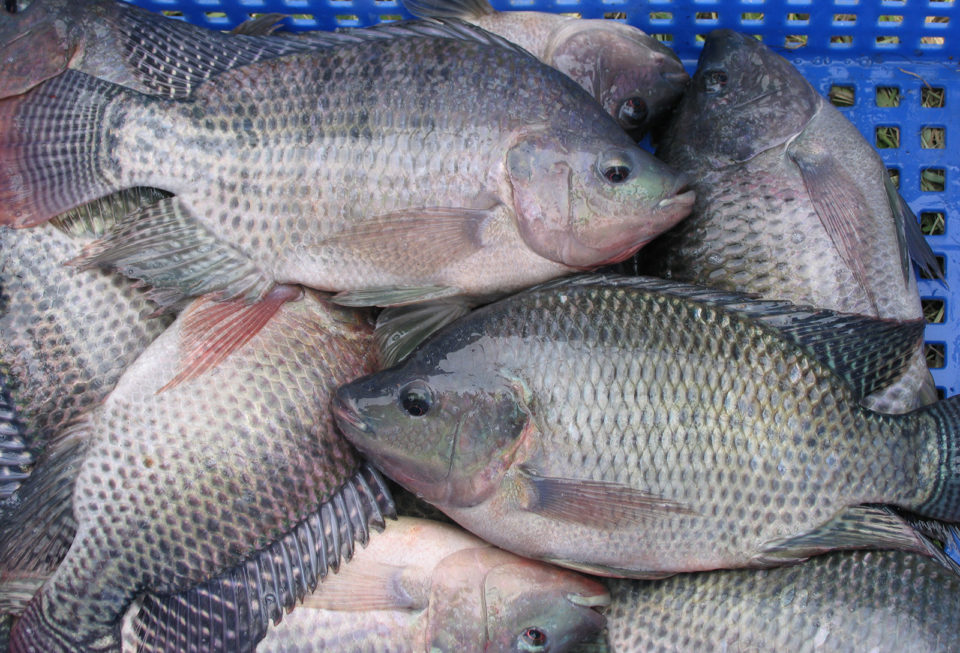
Tilapia is a healthy food choice for consumers because it is a relatively low-fat fish that is rich in proteins and minerals. This has often led to relatively low margins for tilapia fillets compared to other finfish species. However, there is an opportunity for producers to further improve the nutrient value (e.g. healthy fats) of tilapia fillets and offal through manipulations of tilapia feed leading to higher value products in the market place.
The benefits of healthy fats, omega-3 (n-3) fatty acids, to humans include prevention of cardiovascular disease, improvement of visual acuity, and fortification of mental health. For this reason, the American Heart Association (AHA) recommends two 4 oz (113 grams) servings of fatty fish that are high in omega-3 fats (i.e. salmon) per week. Omega-3 fatty acids include, among others, alpha linolenic acid (ALA), eicosapentaenoic acid (EPA), docosapentaenoic acid (DPA) and docosahexaenoic acid (DHA).
Fish oil and microalgae are possible feed ingredient for enriching long chain polyunsaturated fatty acids (LC-PUFAs) in channel catfish, Atlantic salmon, and seabream. But in general, attempts to enrich LC-PUFAs in tilapia fillets using plant oil alternatives have been relatively unsuccessful. Recently, microalgae (Schizochytrium sp.) was successfully used in fish diets to improve production characteristics and the fatty acid profile in young tilapia (approximate mean weight of 25 grams). Moreover, all of the aforementioned studies aimed to enhance n-3 fatty acids in fish fillets, not in the other tissues (e.g. offal).
This article summarizes the original publication (https://doi.org/10.1371/journal.pone.0194241) of a study we conducted to evaluate if diets supplemented with fish oil and algae meal can provide an enrichment of LC-PUFAs and reduction of n-6:n-3 ratio in fillets and offal (including rib meat, liver, and mesenteric fat) of market size fish (greater than 500-gram fish). State funds for this project were matched with Federal funds under the Federal-State Marketing Improvement Program (FSMIP) of the Agricultural Marketing Service (AMS) grant 14- FSMIP-VA-0012 to David D Kuhn, U.S. Department of Agriculture (USDA). This project was also partially supported by fiscal year (FY) 2015 Federal Initiative Hatch Grant (College of Agriculture and Life Sciences, Virginia Tech, Blacksburg, VA) to David D Kuhn. Article processing costs were paid for by Virginia Tech’s Open Access Subvention Fund (OASF).
Study setup
Juvenile tilapia (Oreochromis niloticus, ~11 grams each) were shipped from a commercial supplier in Florida to Virginia Tech’s aquaculture facilities in Blacksburg (Virginia, USA). Fish were acclimated and conditioned for four weeks until they reached a mean individual size of approximately 160 grams prior to experiment initiation. Fish were cultured in an indoor recirculating aquaculture systems (RAS).
Commercial fish oil and algae meal were used in the diets, and proximate data for algae meal was 18.8, 3.70, 3.67 and 24.9 percent protein, moisture, ash and carbohydrates, respectively. All experimental diets were formulated on an isonitrogenous and isocaloric basis. The independent variable for this experiment was the lipid composition of the seven diets. Dependent variables were survival rate, growth, biometrics, performance indices, feed conversion ratio (FCR) and nutritionally relevant fatty acids.
All diets were analyzed to confirm their proximate nutritional values. Feed rates were consistent between all treatment groups on a percent body weight per day basis. Tilapia were weighed weekly on a per tank basis to adjust feed amounts based on weight gains. Growth and the corresponding feed amount were projected each week to account for projected daily growth.
For detailed descriptions on the fish and culture system; diets; feed management; biometrics; tissue sampling; data analysis; and references, please contact the corresponding author. All procedures have been approved by Virginia Tech’s Institute of Animal Care and Use Committee (VT-IACUC-#14±211).
Results and discussion
Results showed that the experimental fish had excellent growth and performance throughout the eight-week feeding trial. Survival ranged from 98 to 100 percent, indicating that fish health was not compromised. Meanwhile, the mean growth rate of fish in this study was good at 45.4±1.0 grams per week. Even though other nutritional factors can contribute to changes in deposition of specific fatty acids into different tissues, the treatment diets in our study were consistent across treatment groups.
Water quality parameters during the experiment were maintained within optimal ranges for tilapia culture. Nutritional profiles were consistent across each of the experimental diets. No significant differences were observed between fat content of the various tissues of fish fed the different diets. Fish performance and biometric results are presented in Table 1. No significant differences between survival, growth, FCR, or any biometrics were observed for fish fed the different experimental diets.
Stoneham, omega-3 enrichment, Table 1
| Parameters | Control | Fish oil 1% | Fish oil 3% | Fish oil 5% | Algae meal 1.75% | Algae meal 5.26% | Algae meal 8.77% | P |
|---|---|---|---|---|---|---|---|---|
| Tilapia Performance | ||||||||
| Survival (%) | 98.0±1.4 | 100±0.0 | 98.0±1.4 | 100±0.0 | 100±0.0 | 100±0.0 | 100±0.0 | 0.2020 |
| Initial weight (g) | 161.4±0.4 | 156.9±1.3 | 156±1.1 | 158.1±0.4 | 161.7±1.1 | 154.6±2.2 | 156.6±0.9 | 0.1344 |
| 4-week weight (g) | 330.6±3.0 | 315.9±7.1 | 315.6±1.4 | 335.0±0.2 | 333.0±4.2 | 328.8±18.0 | 310.5±9.2 | 0.8554 |
| 8-week weight (g) | 521.3±12.5 | 504.5±7.3 | 513.4±10.5 | 539.7±12.7 | 561.7±3.2 | 521.3±45.2 | 484.0±18.5 | 0.4356 |
| Avg. weight gain (g/week) | 45.0±1.6 | 43.4±0.9 | 44.7±1.3 | 47.7±1.6 | 50.0±0.4 | 45.8±5.6 | 40.9±2.3 | 0.5214 |
| FCR | 1.46±0.01 | 1.31±0.01 | 1.31±0.0 | 1.24±0.03 | 1.26±0.05 | 1.30±0.12 | 1.37±0.06 | 0.3982 |
| Biometrics at 8 weeks | ||||||||
| Fillet yield | 45.3±0.6 | 45.0±0.5 | 43.8±0.6 | 44.3±0.6 | 43.9±0.7 | 44.6±0.6 | 43.6±0.7 | 0.1467 |
| Hepatosomatic index | 1.60±0.06 | 1.52±0.08 | 1.61±0.09 | 1.59±0.13 | 1.61±0.07 | 1.65±0.09 | 1.71±0.10 | 0.5218 |
| Viscerasomatic index | 3.04±0.28 | 2.83±0.29 | 2.97±0.20 | 2.61±0.24 | 2.64±0.33 | 3.06±0.24 | 2.90±0.14 | 0.7490 |
| Mesenteric fat index | 0.87±0.06 | 0.98±0.10 | 1.03±0.18 | 1.05±0.07 | 1.17±0.14 | 0.85±0.15 | 0.87±0.13 | 0.6473 |
At week four, results for fillet and rib meat fatty acid showed significant differences for ALA, DHA, n-6, n-6:n-3, and LC-PUFAs (with the addition of EPA) of the fish fed different diets. The best diet of the fish oil diets, FO5 percent, resulted in an increase of n-3 and LC-PUFAs of 41 and 76 percent, respectively, compared to the control group; and with a corresponding decrease in n-6 and n-6:n-3 by 36 and 55 percent, respectively. The best diet to improve the fatty acid profile was algae meal 8.77 percent, resulting in a n-3 and LC-PUFAs increase of 96 and 163 percent over the control diet, respectively. Meanwhile, n-6 and n-6:n-3 ratio were decreased by 37 and 67 percent. Fatty profile changes were similar for the rib meat. The major difference between rib mean and fillets at four weeks was the rib meat contained twice as much crude fat.
At week eight, healthy fats were improved significantly for fish fed fish oil and algae meal diets. More specifically, significant differences were observed for ALA, DHA, DPA, n-6, n-6:n-3, and LC-PUFAs in the fillet and rib meat of the fish fed different diets. The best diet of the fish oil diets was FO5 percent, and fish fed this diet had an increase of n-3 and LC-PUFAs of 165 and 232 percent in their fillet content compared to the control. Meanwhile, n-6 and n-6:n-3 ratio were decreased by 2 and 62 percent. The best diet – algae meal 8.77 percent – resulted in an increase of n-3 and LC-PUFAs increase of 189 and 298 percent in the fillet compared to control fed fish, and with a corresponding decrease in n-6 and n-6:n-3 by 28 and 75 percent, respectively. Similar results were observed for the rib meat, which contained 87 percent more crude fat compared to the fillet at eight weeks.
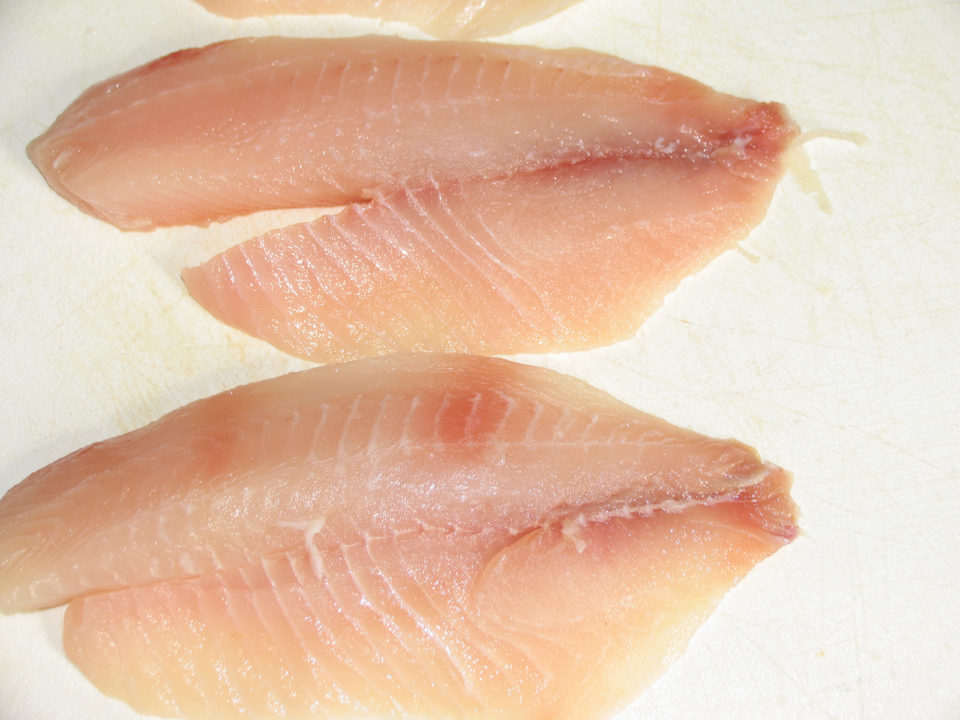
Fillet meat increased significantly from an average of 1.85 to 2.64 percent in crude fat content from four to eight weeks. Similarly, rib meat increased significantly from 3.92 to 4.93 percent crude fat over the same period of time. Healthy fats experienced a similar trend.
Fatty acid profiles of the liver were similar regardless of dietary treatment. Mesenteric fat was similar between the control and fish oil-fed fish. The dose of fish oil did not correlate positively or negatively with the level of fish oil in the diet. However, the fatty acid profile of mesenteric fat correlated with amount if algae meal in the diet.
In the wild, tilapia fatty acid composition fluctuates with location and season. However, in controlled RAS systems, other factors affect fatty acid metabolism including feeding frequency, starvation and water temperature. All of these conditions factor into how tilapia utilize dietary fatty acids and proteins as energy sources. The colder the water temperature, the more efficient fish are at converting saturated fatty acids into monounsaturated and polyunsaturated fatty acids.
Beneficial omega-3 composition was observed to increase linearly with percent algae meal at four weeks and at eight weeks, and percent algae meal in the diet and beneficial n-3 content in the fillet are strongly positively correlated. This was also indicative that tilapia fed increasing percent algae meal diet do not readily utilize the LC-PUFAs themselves but store them, possibly due to the high protein content of the feed, between 35.5±37.3 percent.
Fish fed either the 8.77 percent algae meal, or the 5 percent fish oil diets resulted in a content of >200 mg DHA per 4-ounce (113-gram) serving. This value is greater than commercially available channel catfish, Atlantic and Pacific cod (137 mg, 154 mg, and 173 mg respectively), and demonstrates that farmed tilapia fed these diets had a nutritional improvement over other low-fat white fish.
Future research would include the economic feasibility of a high-percent algae meal diet compared to the added value to consumers of omega-3 enriched tilapia fillets. This would solidify the use of practical alternatives to fish oil as a method of modifying omega-3 content of tilapia fillets. New advancements in the production of Schizochytrium sp. could lead to the rapid, sustainable and economical cultivation of DHA-rich microalgae.
Also observing if the linear trend of beneficial omega-3 fillet content continues with increasing percent of algae meal beyond 8.77 percent should be pursued. If the trend continues, it may be possible to develop a finishing feed with very high algae meal (i.e. possibly 10 percent of diet) that deposits the desired quantity of beneficial omega-3 into the fillet quicker and therefore more cost-effectively.
Perspectives
Overall, the experimental diets presented in this study show promise as a feasible option for enriching beneficial omega-3 content in tilapia fillets. Tilapia in this study also demonstrated the ability to elongate and desaturate shorter chain polyunsaturated fatty acids into longer chain polyunsaturated fatty acids.
The continuous feeding along with moderate temperatures, high protein and high omega-3 diets resulted in rapid fish growth and beneficial omega-3 enriched fillets.
This study also suggests that tilapia fed these diets could produce value-added byproducts, by using omega-3 enriched rib meat, liver and mesenteric fat tissues in other processed foods.
References available from corresponding author.
Now that you've reached the end of the article ...
… please consider supporting GSA’s mission to advance responsible seafood practices through education, advocacy and third-party assurances. The Advocate aims to document the evolution of responsible seafood practices and share the expansive knowledge of our vast network of contributors.
By becoming a Global Seafood Alliance member, you’re ensuring that all of the pre-competitive work we do through member benefits, resources and events can continue. Individual membership costs just $50 a year.
Not a GSA member? Join us.
Authors
-
Tyler R. Stoneham
Department of Food Science and Technology
Virginia Polytechnic Institute and State University
Blacksburg, VA 24061 USA -

David D. Kuhn, Ph.D.
Corresponding author
Department of Food Science and Technology
Virginia Polytechnic Institute and State University
Blacksburg, VA 24061 USA[117,100,101,46,116,118,64,110,104,117,107,101,118,97,100]
-
Daniel P. Taylor
Department of Food Science and Technology
Virginia Polytechnic Institute and State University
Blacksburg, VA 24061 USA -
Andrew P. Neilson, Ph.D.
Department of Food Science and Technology
Virginia Polytechnic Institute and State University
Blacksburg, VA 24061 USA -

Stephen A. Smith, DVM, Ph.D.
Department of Biomedical Sciences and Pathology
Virginia-Maryland Regional College of Veterinary Medicine
Blacksburg, Virginia, USA -

Delbert M. Gatlin III, Ph.D.
Department of Fisheries and Wildlife Sciences
Texas A&M University
College Station, TX 77843-2258 USA -
Hyun Sik S. Chu, Ph.D.
Department of Food Science and Technology
Virginia Polytechnic Institute and State University
Blacksburg, VA 24061 USA -

Sean F. O'Keefe
Department of Food Science and Technology
Virginia Polytechnic Institute and State University
Blacksburg, VA 24061 USA
Tagged With
Related Posts
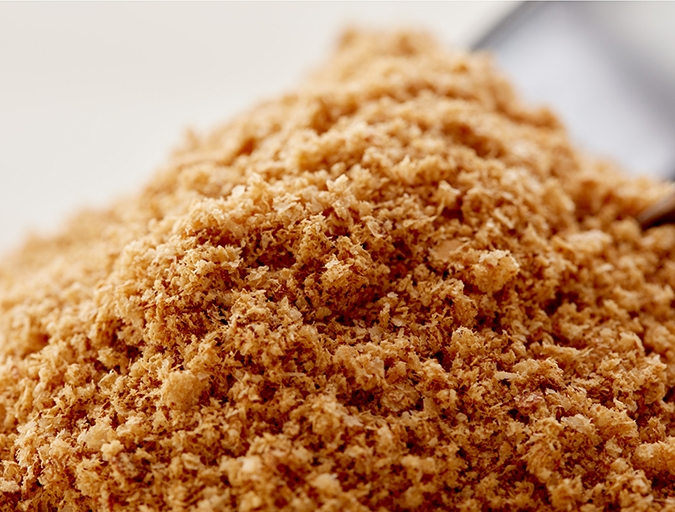
Aquafeeds
Bridging the omega-3 gap with methane, microalgae
Innovation is leading to new ingredient options for renewable sources of omega-3 fatty acids. But Replicating long chain fatty acids is a tall order, Advocate contributor Lisa Duchene discovered.
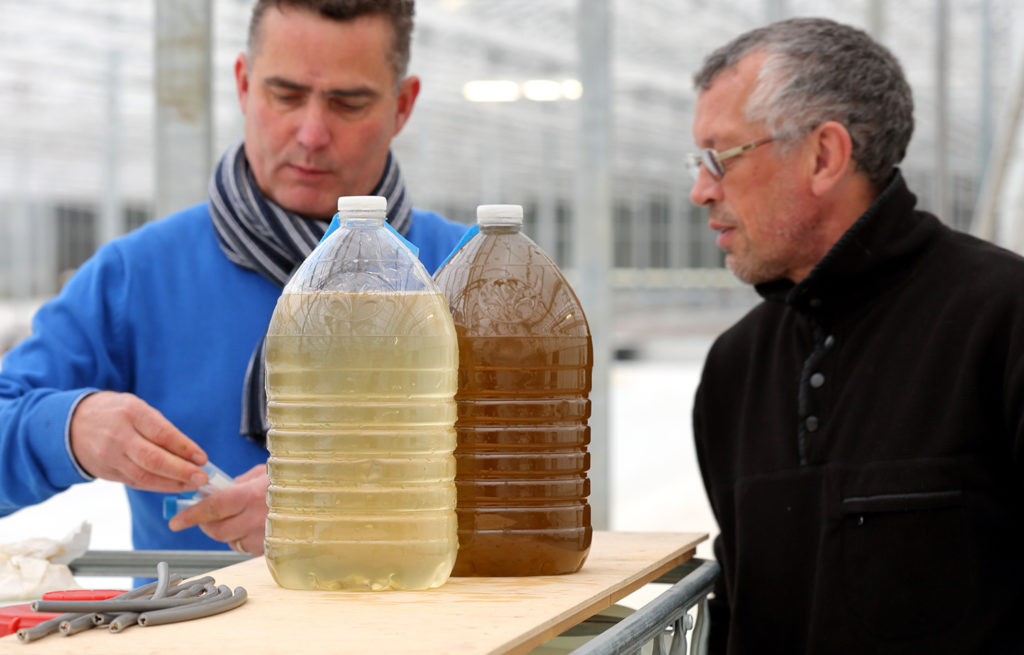
Innovation & Investment
Algae innovators aim to freeze out early-stage shrimp losses
A greenhouse in Belgium believes its innovative shrimp feed product, made from freeze-dried microalgae, packs the necessary nutrients for the crustacean’s most vulnerable life stage: the first three days of its life.
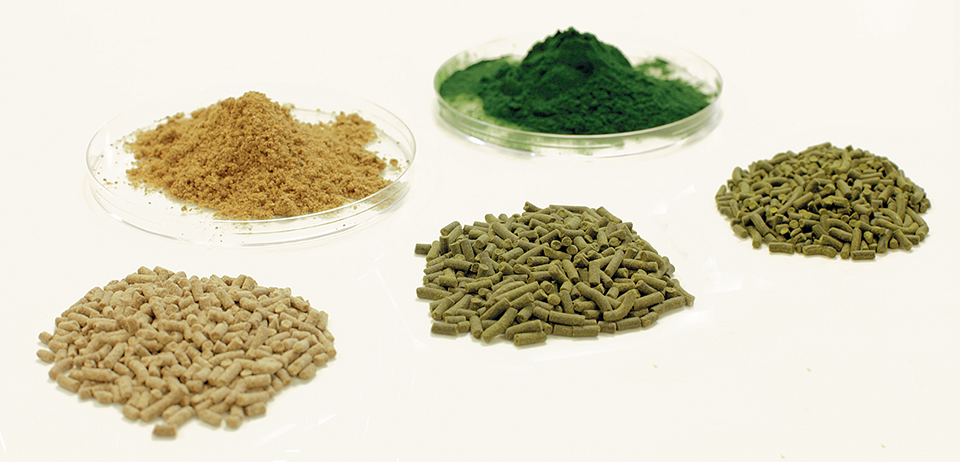
Aquafeeds
Algae alternative: Chlorella studied as protein source in tilapia feeds
Chlorella and other species have potential as protein sources in aquafeeds. In trials with tilapia fry raised in a recirculating system, the fish received a fishmeal-based control diet or feeds with portions of the fishmeal replaced by Chlorella.

Innovation & Investment
Aquafeed ingredient AlgaPrime wins GAA Innovation Award
A proliferation of alternative feed ingredients has allowed aquaculture to extend the natural resources it depends on. AlgaPrime, packed with the long-chain omega-3 fatty acid DHA, is being recognized as a game-changing innovation for aquaculture feeds.


